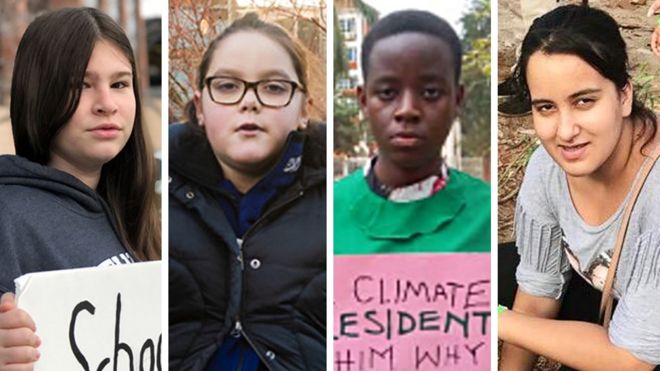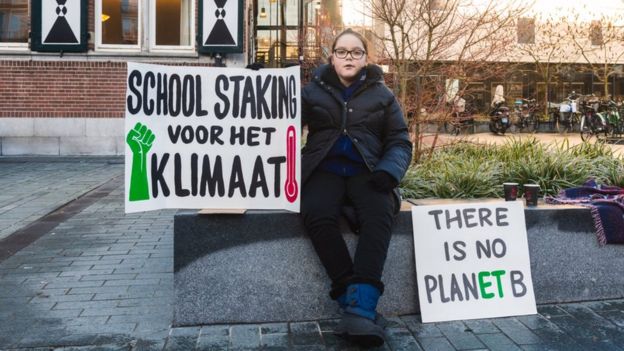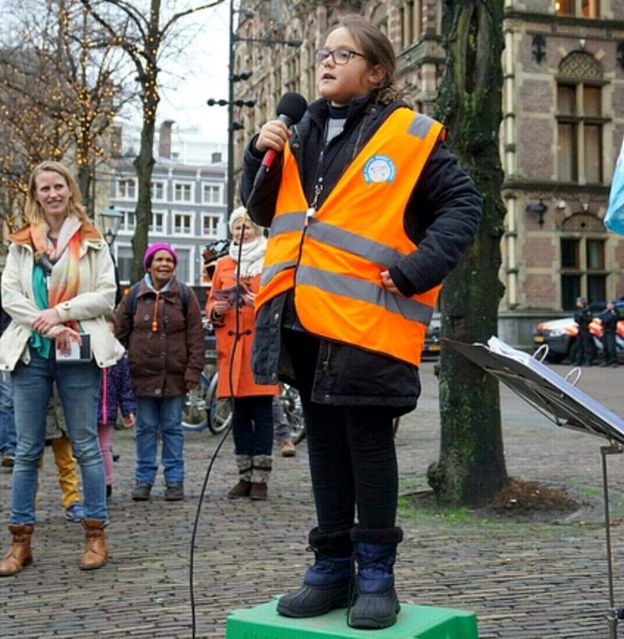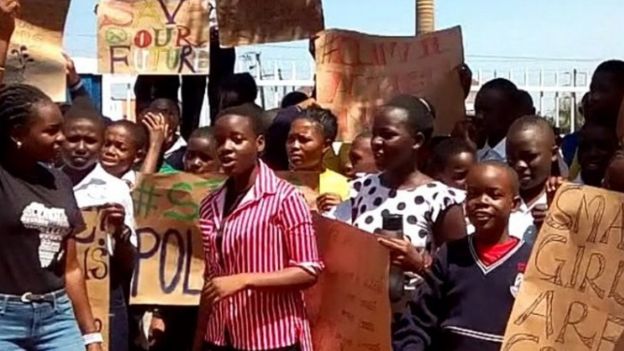
This Friday, like many Fridays before it, Haven Coleman will not be attending school. The 13-year-old is taking a stand. Coleman, from Denver, Colorado, is risking her education to strike for climate change action. She said her decision was because of one person: Greta Thunberg.
"Once we found Greta, we were like, 'Oh that's amazing, let me try, let me do something similar'," Coleman said.When Thunberg sat outside Sweden's parliament on 20 August, 2018, aged 15, she cut a lonely figure. Carrying a "school strike for climate change" sign, she said she was refusing to attend classes until Swedish politicians took action.
On the 15th of March, an estimated 1.6 million students from 125 countries walked out of school to demand climate change action. Coleman, the co-director of US Youth Climate Strike, was one of them. She founded the organization with Isra Hirsi, the 16-year-old daughter of Democratic congresswoman Ilhan Omar, and Alexandria Villaseñor, 13.
"It's really cool because it's driven by girls. I think that's amazing," she said.
Based on the "tons of people" she knows within the movement, she believes girls outnumber boys. Learning about the effects of deforestation on sloths - her "favorite animal" - was her gateway into climate activism. But it was Thunberg's school walk-out, she said, that prompted her to start striking on her own.

Haven has accused adults of being frozen by the fear of change
So she began descending the steps of the Denver Capitol Building every Friday with her "school for climate strike" placard. With the help of Hirsi, who's from Minneapolis, and Villaseñor, who's from New York, she led a nationwide strike on March 15th across all 50 states.
Coleman takes a dim view of adults like Australia's Prime Minister Scott Morrison, who believes she should be in school, not out protesting. Her assessment of world leaders was damning - she accused them of patronizing her and being frozen by the fear of change. Youth strikers were "turning this fear into action", she said. "We're trying to fix a mess that adults can still fix."
Coleman's organization, US Youth Climate Strike, is backing the New Green Deal (NGD) - a policy proposal to reduce carbon emissions by transforming the US economy. Alexandria Ocasio-Cortez, the youngest congresswoman in history at 29, is an enthusiastic supporter of the policy initiative, although convincing others of its merits has proved more difficult.

Thunberg stands on stage at a Fridays for Future protest in Berlin
Ms Ocasio-Cortez's NGD resolution was roundly rejected by the Senate in March, defeated by 57 votes to zero. Republican lawmakers, some of whom do not believe in man-made climate change, have branded the NGD a "socialist manifesto".
Their resistance illustrates the political realities facing young climate activists. For all the young strikers' passion, it is politicians who are navigating the economic and practical complexities of shifting the global economy away from fossil fuels and towards a carbon-free future.
To minimize the risks, global carbon emissions must be cut by 50% within the next 11 years, a landmark UN report warned last year. If temperatures go beyond the 1.5C threshold, experts fear climate change could become unstoppable by 2030 - by which time Lilly Platt will be 22.
Platt, who is 11 and lives in the Netherlands, is impatient for change. "I'm in the generation that has to suffer through this."

Lilly Platt started a litter-picking campaign in 2015
Accompanied by her mom, she strikes on Fridays for an hour with permission from her school.
Her protests, held outside her local town hall in Utrecht, were about "educating and informing people about climate change", she said. She is a child ambassador for the Plastic Pollution Coalition and HOW Global, a water charity.
And she has her own litter-picking campaign, Lilly's Plastic Pick Up. Started in 2015, when Platt was seven, it focuses on "informing people about single-use plastic and how they can stop using it".
She too cited Thunberg as the inspiration for her first school climate strike. But she is now well known in her own right - she has more than 6,600 followers on Twitter. Is there a reason girls like her are spearheading climate movements?
"I think it's because we're inspiring more people. You have to lead by example," she said.

Lilly Platt strikes school on Fridays with her mom
In many cases, it is the developing countries that contribute least to global fossil fuel emissions that are likely to suffer most from climate change.
Leah Namugerwa is a 14-year-old FFF activist in Kampala, the capital of Uganda. Her country, like many others in Africa, is at risk of desertification - a process that causes fertile agricultural land to turn barren. Experts say droughts and elevated temperatures - two factors linked to climate change - cause it to occur.
At the age of 12, Namugerwa watched TV news reports about Uganda's devastating famine of 2017, when exceptional drought conditions left millions in need of food aid. Horrified by the scale of suffering, she felt compelled to act. Inspired by Thunberg, she held her debut protest on 1 February this year and has been striking every Friday since.
"I wanted to make a positive change in my country and pressure my government into taking action,"

Leah Namugerwa (wearing a red pinstriped shirt) striking with her classmates
Climate change was also "escalating existing gender inequality" - women and girls would endure a "steep social cost", Namugerwa said.
According to a 2015 report by the World Health Organization (WHO), women are more vulnerable than men to the impact of extreme climate events for a variety of reasons, including biological and social factors.
But women and girls would not suffer in silence, Namugerwa said. "We have no-one to fight for us so we have to do it ourselves."
The US, China and India are the three biggest emitters of carbon dioxide in recent decades, according to latest statistics from Our World in Data. Asheer Kandhari is a 15-year-old climate activist from India's capital, Delhi, where studies show carbon emissions are having a significant impact on air quality. Kandhari was inspired by the recent Extinction Rebellion protests in London, which saw activists glue themselves together, blocking major roads and train routes.
Of the world's 30 worst cities for air pollution, 22 are in India, according to a report by Greenpeace and AirVisual. Delhi, where Kandhari strikes with FFF India, was ranked the world's most polluted capital. In contrast, London is the 48th most polluted capital.
Furious with an Indian government she claims is "destroying" the environment, Kandhari wants Indian Prime Minister Narendra Modi to declare a climate emergency. "They're not realizing how important this is or the severity of the situation," she said.
She called on boys to get more involved. "It's as much their movement as it is ours," she said.

Asheer Kandhari takes part in Extinction Rebellion protests in India
Research by Girlguiding has found that climate degradation ranks among the biggest concerns for young women.
With the help of the world's media, Thunberg has amplified and personified their anxieties. In the process, she has managed to mobilize them with a simple call to action: school strike for climate.
For Kandhari, the reason for joining her is a matter of life and death. "What's the point of studying if [humanity may not live to see] the next century?" she asks.

No comments:
Post a Comment